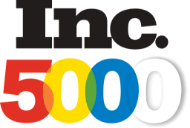
Hire An Expert Amazon Marketing Agency
![]()
Awarded #1 In The Usa By Clutch.co.
Looking for help with organic rank, advertising, product detail
page creation or optimization, Storefront or A+ content
creation? Look no further. Ignite Visibility can assist
with all of your Amazon Marketing needs.

THE LEADER IN DIGITAL MARKETING









"We love helping brands build a presence on Amazon. Whether that’s building their A+ or Written Content, managing Search or DSP advertising,or assisting with Product Listing creation, we’re here to help you excel on Amazon.”
- John Lincoln, CEO Ignite Visibility
CUSTOM STRATEGIES
“The way they built our support team is as unique as our business. It’s like we all just fit together - and therefore get more accomplished in less time.”
- Director of Marketing, Jazzercise, Inc.
INDUSTRY-LEADING TEAMS
“Their experience speaks for itself. You can step back and trust that they’re performing.”
- Owner, Rocket Resume

Why Select Ignite Visibility For Amazon Marketing Services:
- Amazon is no longer an option; it is needed for long-term success. Ignite Visibility will ensure your advertising strategy is aligned with your goals on Amazon.
- Customizable contracts, based on your business needs.
- Expert Staff who have experience with Amazon Advertising, DSP, Amazon SEO, and Creative Services
- More than half of online searches begin and end on Amazon. Ignite Visibility is here to help make sure your brand is standing out amongst the competition
- On average, small and medium-sized businesses located in the US sell more than 4,000 items per minute, making Amazon a critical platform for your brand. Let Ignite Visibility help your business succeed on the US Ecommerce Channel responsible for over 45% of US online spending.
Ignite Visibility Amazon Marketing Services
 Amazon Ad Console Management
Amazon Ad Console Management
Ignite Visibility’s Amazon Ad Console Management services offer a comprehensive approach to increasing your website rankings by optimizing on-page performance, backend issues, and developing an SEO-friendly content strategy that speaks to your ideal audience.
We’ll start by fixing the technical errors, ensuring crawlers can easily navigate through your website, so more people can find you. From there, we’ll perform a deep dive using a variety of tools to identify the best keywords in your niche, and help you implement them in a way that drives sales.
 Amazon DSP Management
Amazon DSP Management
For brick-and-mortars, increasing your search performance can dramatically increase the amount of foot traffic to your physical location. With our local business clients, our primary goal is getting them on the map so they can capture more high-intent customers performing “near me” searches.
We’ll first focus our efforts on optimizing your Google My Business profile and establishing consistency across all existing business listings. Once everything is set up correctly, we’ll focus on building citations and developing a review generation strategy for building credibility with customers.
 Amazon Reporting
Amazon Reporting
As your company expands into global markets, you’ll need to develop a strategy for connecting with local audiences in their native language. While you might be able to translate some SEO content, understanding the search intent of foreign language queries, or which terms users enter to find information is incredibly challenging.
Ignite Visibility specializes in multilingual and multiregional SEO strategies, allowing our clients to deliver engaging experiences regardless of location or language.
 Amazon Listing Updates and Optimizations
Amazon Listing Updates and Optimizations
For brick-and-mortars, increasing your search performance can dramatically increase the amount of foot traffic to your physical location. With our local business clients, our primary goal is getting them on the map so they can capture more high-intent customers performing “near me” searches.
We’ll first focus our efforts on optimizing your Google My Business profile and establishing consistency across all existing business listings. Once everything is set up correctly, we’ll focus on building citations and developing a review generation strategy for building credibility with customers.
 Seller Launch Consultation
Seller Launch Consultation
For organizations that could use some guidance, Ignite Visibility offers SEO consulting services designed to help clients develop, implement, and optimize an SEO strategy.
We’ll audit internal processes, offer recommendations and hands-on support, and provide documentation outlining everything from workflows to metrics to channel-specific strategies.
 Amazon Organic Rank Enhancement
Amazon Organic Rank Enhancement
Our e-commerce SEO services aim to help brands attract qualified customers and set the stage for increased conversions. We’ll address technical issues, optimize descriptions, and improve your internal linking structure to encourage browsing.
Additionally, we’ll apply structured markup to help search engines better understand your site, focus on building a memorable brand, and develop a review generation strategy to build consumer trust.
Our Amazon MarketPlace Process
STEP 1
Account Health Analysis
STEP 2
Amazon MarketPlace Management
STEP 3
Amazon AdConsole Management Services
STEP 4
Building your Amazon Brand
STEP 5
Amazon DSP
STEP 6
Amazon Reporting and Attribution
STEP 1
Account Health Analysis
- Setup a call with our team of experts to get a complimentary analysis of your Amazon Seller or Vendor Account
- Through the analysis we will identify key opportunities within the account where our team can help support and manage
- FBA/FBM Business Analysis
- Amazon Advertising Audit for best practices to drive qualified traffic to your products
- Product Listing, Brand Storefront, and A+ content Analysis to ensure your brand is retail ready for Amazon's Marketplace
- Based off our Amazon analysis, we build custom packages for what your brand needs to be successful on Amazon
STEP 2
Amazon MarketPlace Management
- Dedicated Amazon Marketplace team assigned to your brand that helps support you on:
- Seller and Vendor Central Account Health Monitoring and Recommendations
- Weekly Customized Dashboard Reporting
- Product Optimization
- Amazon Top Competitor Analysis
- Proactive Client communication and support
- Pricing and Promotion Strategy
STEP 3
Amazon AdConsole Management Services
- With our programmatic bidding technology, we offer full management of Sponsored Products, Sponsored Brands, and Sponsored Display campaign build-out, execution, and ongoing optimization
- Product Level Bidding
- Budget Management
- Keyword and Search Term Harvesting
- Keyword Research
- Off Amazon Traffic Opportunities and Execution
STEP 4
Building your Amazon Brand
- Building your brand on Amazon is becoming increasingly important as Amazon continues to add new ways to give your brand a presence on their marketplace, we help by:
- Becoming experts in your products and helping outline the unique selling propositions that are important to an Amazon shopper by writing and optimizing your listing’s written content
- Building out an Amazon Storefront that is consistent with your brand, that organizes your products in the most efficient way for shoppers to discover your products and uncover more about your brand to help turn them into a lifetime customers
- Build out and execute A+ content that is mobile friendly to help drive sales
- Amazon Posts that are current with your other social media efforts
STEP 5
Amazon DSP
- Amazon has their own Display Network Amazon DSP (Demand Side Platform) that can be used for both Endemic (sells on Amazon) and Non-Endemic (does not sell on Amazon) Brands to tap into their 1st Party Data as well as their extensive list of Owned and Operated Inventory
- Help get Brands into the DSP Platform
- Provide Brands with access to valuable placement, data, and advertising features
- Build and support a Full-Funnel approach with Amazon DSP Management to stay ahead of competitors
- Weekly Reporting with the Data Metrics that matter the most to your business
- Repeat Customer and Personalized Retargeting
- New Customers and Customized Retargeting
STEP 6
Amazon Reporting and Attribution
- Cross-Channel Attribution opportunities with Amazon’s new Attribution Offerings
- Weekly Customized Reports
- Weekly and or Bi-Weekly Calls depending on what works best for your team
- Client communication portal to ensure project deadlines are being met and both parties have a clear and easy line of communication
- Consistently testing, measuring, optimizing, and planning based on the strategies that maximize ROI to and allow us to make data-informed decisions up to date with Amazon’s constantly changing algorithm
